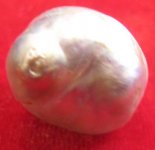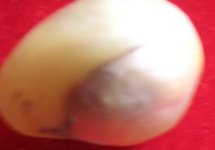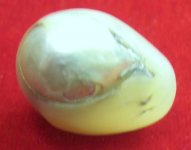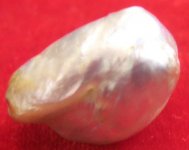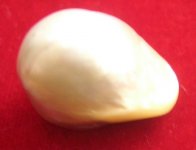Hi Gail,
Thanks for finding that article, but the mystery grows. The G&G article was unable to determine where they were grown or they would have mentioned it. According to Jeremy, they did not.
***
t-n saltwater pearls are not even hinted at anywhere in Strack and she has several sections which describe tissue nucleation and I read them all today.
to all:
Tom says
since it is my men bringing them to me with parcels of naturals, I just cannot stop wondering if they indeed might be naturals, and that the lab criteria are inaccurate.
If Tom's men brought them in, they must be poached, because t-n cultured SS pearls would be grown on a farm. Somehow, I doubt that scenario. I doubt there is a farm doing T-N and I doubt big, big pearls are being poached. Why has that article not been repeated all over the place?
I don't trust that article; they published it as fact.
Remember how natural pearls are formed. They develop inside a pearl sac grown from epithelial tissue that somehow broke through the mantle and formed a pearl sack. The pearl then grows inside the pearl sack. So the coating of an object like a grain of sand is a myth.
Hypothetically, natural pearls with empty centers are formed around an organic intruder that carried epithelial cells from the outside edge of the mantle, into the mantle itself and then usually dissolved as the pearl started forming around it.
In cultured t-n pearls, the tiny piece of epithelial tissue is pushed into the mantle to form the pearl sack. The pearl sac then grows the pearls.
Well, this is fascinating and I hope it is tracked down.
Someone be sure to correct any mistakes in my description. ..........even though I get the story right, I often get the details wrong.
Tom
Chatoyance is exactly the sheeting phenomena I saw in those pearls. Sheets of chatoyance alternating with translucency. In a rounder pearl, there would be no doubt it deserves its own name- it is definitely not like any other iridescence or overtones it is inside the pearl in a sheet you can see clearly Through the pearl.
Often the "water" can look kind of like a translucent horny material, but feels hard, like a mineral. Not all pearls with water are gem grade, like that huge one I photoed back in your early pages of this thread. The perfect pearl with water is round with high luster, good color and good surface and has coated the outside evenly

